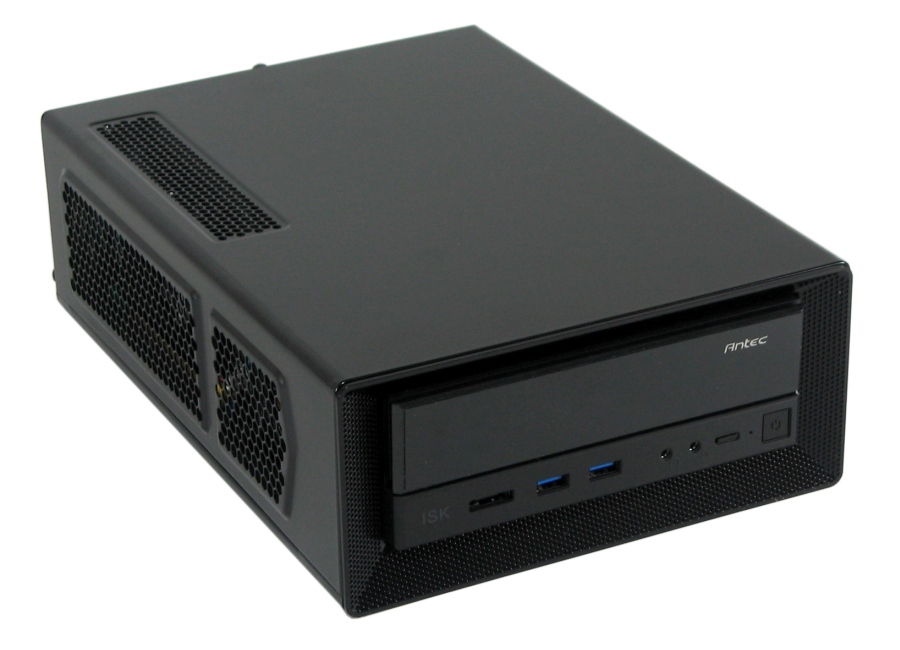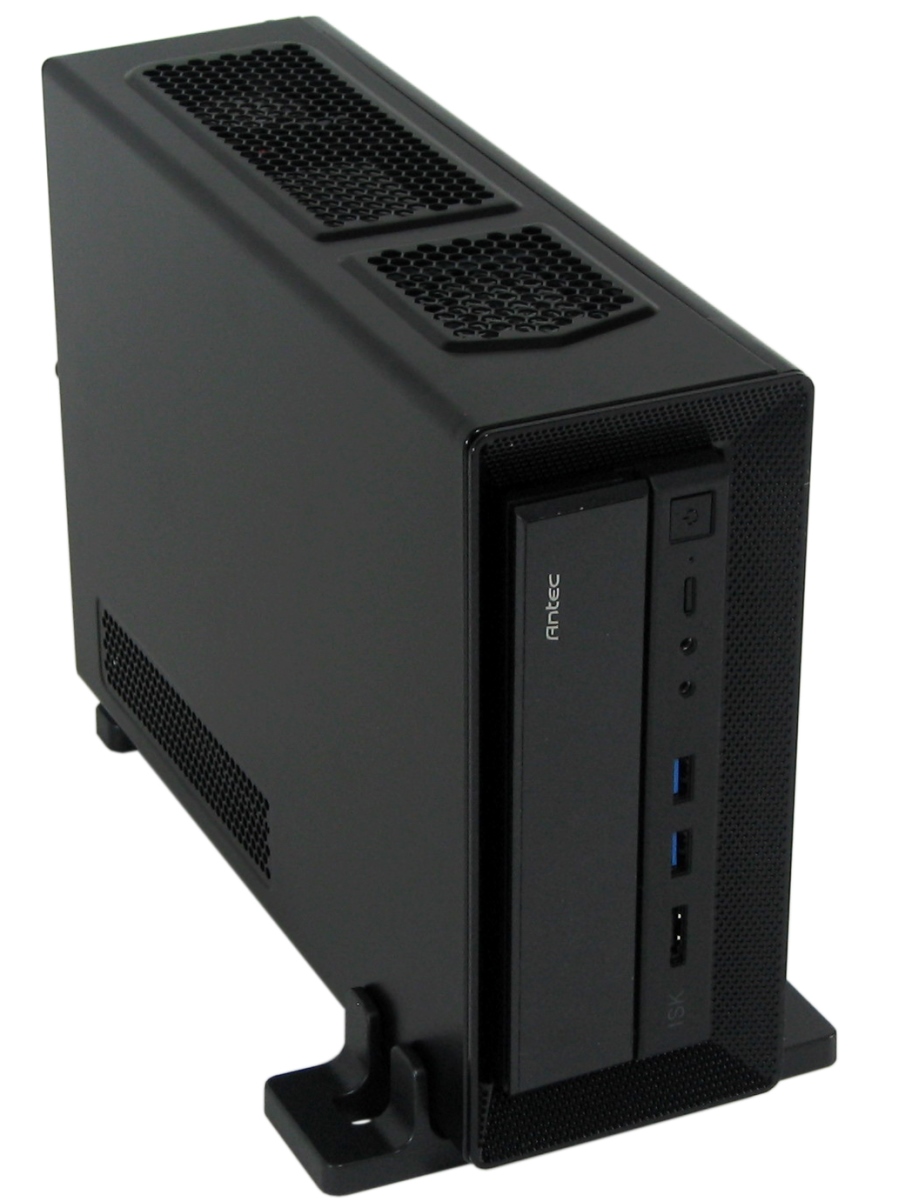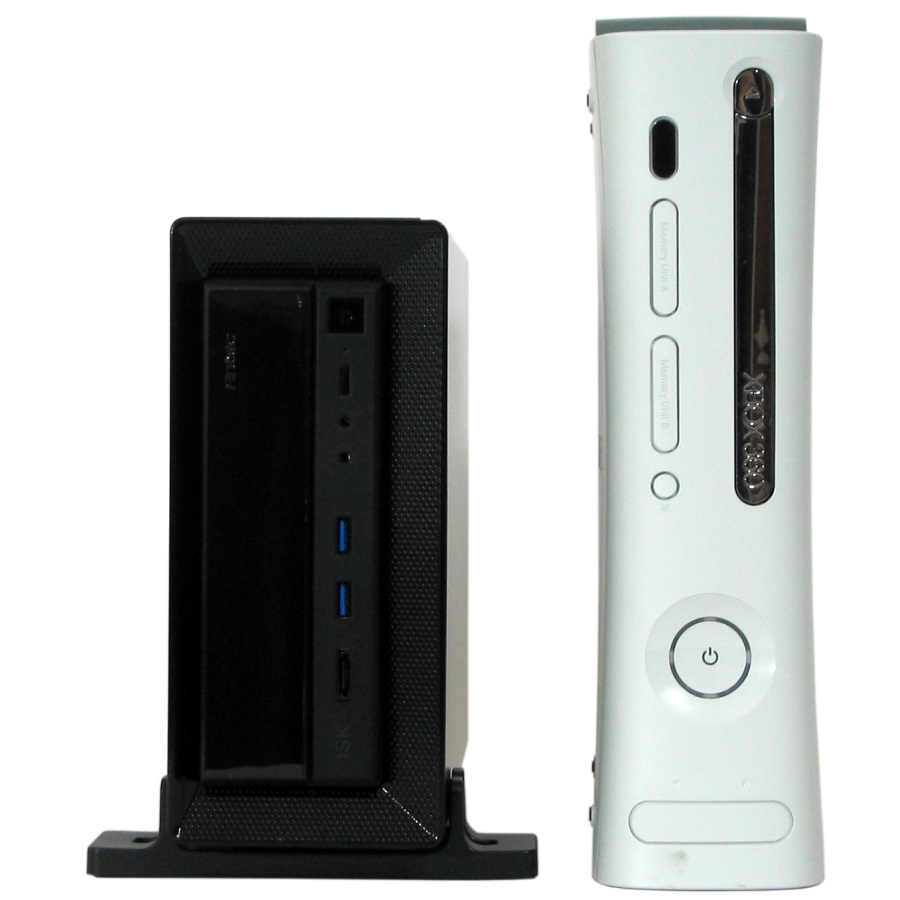System Builder Marathon, Q2 2013: The $400 Spirit Of Mini-ITX
An Inexpensive Console-Sized Gaming PC
System Builder Marathon, Q2 2013: The Articles
Here are links to each of the four articles in this quarter’s System Builder Marathon (we’ll update them as each story is published). And remember, these systems are all being given away at the end of the marathon.
To enter the giveaway, please fill out this SurveyGizmo form, and be sure to read the complete rules before entering!
Day 1: The $650 Mini-ITX Gaming PC
Day 2: The $1300 Mini-ITX Enthusiast PC
Day 3: The $2500 Mini-Performance PC
Day 4: Performance And Value, Dissected
Day 5: The $400 "True Spirit of Mini-ITX" PC
Introduction
As PC builders, all of us fine-tune our parts lists to satisfy certain goals, and generally under the limits of a budget. Often, our goals are at odds with each other, at times bordering on mutual exclusivity. For instance, what happens when we try to do the impossible, combining small size and big performance? Bound by today's technology, we end up compromising both areas to some degree.
Mini-ITX motherboards themselves are good examples. There are smaller form factors out there. But standard-sized processor interfaces, slots, and ports allow us to fit conventional desktop hardware into more compact spaces. But these boards are far more limited in features, and they simply cannot enable the PCI Express connectivity needed for multi-card graphics configurations.
Get Tom's Hardware's best news and in-depth reviews, straight to your inbox.
And unlike a couple of enthusiasts who took measures into their own hands and designed the NCASE M1, we are generally limited to available retail parts that require the appropriate amount of space to work together, while remaining adequately cool. When the perfect solution doesn’t (yet) exist, or is just out of reach financially, it becomes all about finding the right balance of compromises.
This quarter, we set out in search of big performance from small boxes. Our rules were fairly relaxed, aside from the use of mini-ITX motherboards and enclosures designed around the form factor. There would be no cheating-up to microATX or larger. All three of us even pushed our budgets a little higher and leave out unessential parts, like the optical drive.
Whether we were driven by competition or beholden to reader feedback, Don, Thomas, and I stayed true to the System Builder Marathon series by maximizing performance at each price point. The trio of configurations packed huge graphics for high-resolution gaming. And, in the end, we all ended up with boxes that were probably bigger than what we originally intended. It's probable that many Tom's Hardware readers would do the very same thing, facing the same limitations. Others would find our stubby-looking cases only somewhat more inconspicuous than the full ATX chassis we usually end up with.
We couldn't help but measure our top two builds against Falcon Northwest's Tiki and pit our gaming PC against Alienware’s X51. Those pre-built systems pack Ivy Bridge-based Core i7 processors and dual-slot graphics cards (albeit through the use of a PCIe riser) into slim enclosures measuring no more than four inches wide. Without access to that same level of engineering, we either had to choose boxier cases that claimed more desktop real estate or give up on high-end gaming entirely.
As the spending limited increased to cover the mini-ITX premiums, I became concerned that my $650 gaming machine was no longer a budget-friendly option for many folks. Add in an operating system, monitor, and peripherals, and you're looking at closer to a $1000 setup. Then, when I read over all three system orders and realized my configuration would be the smallest, I couldn't help but feel that the whole team had missed its mark.
So, for fun, I decided to price out a budget-friendly slim PC and shoot it over to our editor-in-chief and Tiki-owner, Chris Angelini. He was more than happy to get this one ordered as a fourth bonus build. I knew I couldn't replicate a Tiki, or even an X51. But enthusiasts willing to sacrifice graphics performance can still build a tiny machine to serve numerous computing needs (including the potential for decent gaming). Enter our budget-oriented "True Spirit of Mini-ITX PC."
| $400 Mini-ITX System Components | ||
|---|---|---|
| Component | Purchase Price | |
| CPU | Intel Pentium G860 (Sandy Bridge): 3.0 GHz, 3 MB Shared L3 cache | $70 |
| CPU Cooler | Intel Boxed Heat Sink and Fan | - |
| Motherboard | Foxconn H61S: LGA 1155, Intel H61 Express | $50 |
| RAM | Crucial Ballistix Tactical Tracer 4 GB (2 x 2 GB) DDR3-1600 BLT2KIT2G3D1608DT2TXRG | $33 |
| Graphics | Sapphire 100357LP: Radeon HD 7750 1 GB | $110 |
| Hard Drive | Samsung Spinpoint M8 ST320LM001: 320 GB, 5400 RPM, SATA 3.0Gb/s, 2.5" Hard Drive | $50 |
| Case | Antec ISK300-150 Black Mini-ITX Desktop | $80 |
| Power | Antec FP-150-8 Flex (included with case) | - |
| Optical | None | - |
| Row 10 - Cell 0 | Total Price | $393 |
This was still meant to be a gaming machine, so I wanted to avoid AMD's APUs in favor of discrete graphics. That necessitated an enclosure with at least one expansion slot. I chose Antec’s ISK300-150 as a starting point, offering the desired balance of small size, ventilation, and hardware support. It's smaller than the Tiki in every dimension, and at roughly 426 cubic inches, it cuts more than 40% of the volume (32% less than the X51, which itself relies on an external power brick).
Our console-sized PC certainly has small covered. But its single half-height expansion slot caps us to far lower 3D performance than most of the gaming PCs we build, while the included 150 W custom Flex-ATX power supply further limits the platforms we can use.
Newegg never stocked the niche Afox Radeon HD 7850, which, to our knowledge is still the fastest low-profile desktop graphics card on the market. Even if it sold in the U.S., it'd still be too expensive, and we'd have to worry about its power consumption. Rather, Sapphire’s 100357LP, a low profile reference-clocked Radeon HD 7750 with a quiet, effective, single-slot cooler, stands in for what we're doing. Complementary hardware comes in well under budget.
-
ingtar33 great article. this type of look at how a low end "budget" build handles modern titles was perfect. Loved it. I think you got about the most you could hope for out of a $400 budget. Frankly i can't find a way to make something better at that price point. spot on really. nicely done.Reply
I do like how most of those games were "playable" on high settings at 1080p with that tiny rig... very cool. -
Crashman Nice build, makes me wonder how it would stack up to my old 4.0 GHz overclocked Core 2 Duo office PC. Which gets gamed on occasionally using its HD 6850 graphics card.Reply -
allanitomwesh FINALLY! I agree this whole system builder was almost a fail.Reply
Also, I can't believe you had a SG05 and didn't build with it,it has an awesome power supply. Again,if you weren't getting a disk drive the V3+ was the smaller, higher quality case than CM 120 ( though they're finished on newegg)
The obsession with ginormous cards in tiny places made your cases not tiny.Clearly,a more sensible build,like with a 670,would fit in a much smaller footprint.
The lack of the FT03 Mini is a fail. It's a Mac killing case,and should've been the go to case for the $2500 build, because at that price,my case better look it.
Otherwise I like that you were at least up to the challenge, and I applaud this last build. -
Crashman Reply
The FT03 Mini would have probably caused the $2500 PC's graphics card to overheat, or caused the graphics card to overheat the CPU. And a 670 might have worked, but then it wouldn't have been a $2500 PC. But please don't let the facts get in the way of your opinion.11047601 said:FINALLY! I agree this whole system builder was almost a fail.
Also, I can't believe you had a SG05 and didn't build with it,it has an awesome power supply. Again,if you weren't getting a disk drive the V3+ was the smaller, higher quality case than CM 120 ( though they're finished on newegg)
The obsession with ginormous cards in tiny places made your cases not tiny.Clearly,a more sensible build,like with a 670,would fit in a much smaller footprint.
The lack of the FT03 Mini is a fail. It's a Mac killing case,and should've been the go to case for the $2500 build, because at that price,my case better look it.
Otherwise I like that you were at least up to the challenge, and I applaud this last build.
You could say that nobody should even bother spending $2500 on an ITX-based system, or that a system with ITX limitations should never be expected to provide top performance. At least those opinions would make more sense than the stuff you said above.
-
brucek2 My favorite of the builds. Feels congruent to me in that budget, form factor and system capabilities all align to each other and to my personal sensibilities. I could see making a system like this for a bedroom or den.Reply -
Crashman Reply
Or even an office! Really. I might not build one of these for a performance competition, but it looks like a solid alternative to my retired-gaming office PC.11047721 said:My favorite of the builds. Feels congruent to me in that budget, form factor and system capabilities all align to each other and to my personal sensibilities. I could see making a system like this for a bedroom or den.
-
CommentariesAnd More PCPartPicker part list / Price breakdown by merchant / BenchmarksReply
CPU: Intel Pentium G860 3.0GHz Dual-Core Processor ($69.99 @ Newegg)
Motherboard: Foxconn H61S Mini ITX LGA1155 Motherboard ($49.99 @ Amazon)
Memory: Corsair 4GB (1 x 4GB) DDR3-1333 Memory ($29.99 @ NCIX US)
Storage: Samsung Spinpoint M8 500GB 2.5" 5400RPM Internal Hard Drive ($54.99 @ Newegg)
Video Card: Sapphire Radeon HD 7750 1GB Video Card ($99.99 @ Newegg)
Wireless Network Adapter: Rosewill RNX-N180UB 802.11b/g/n USB 2.0 Wi-Fi Adapter ($9.99 @ Newegg)
Case: Rosewill RS-MI-01 BK Mini ITX Tower Case w/250W Power Supply ($49.99 @ Amazon)
Optical Drive: LG GH24NS95 DVD/CD Writer ($17.99 @ Newegg)
Total: $371.92
(Prices include shipping, taxes, and discounts when available.)(Generated by PCPartPicker 2013-06-27 03:06 EDT-0400)
Some improvements I would like to suggest , Maybe I am crazy , but felt I should do this. -
silverblue Even this diminutive little machine would significantly outpace my old Phenom II X3 710, XFX HD 4830 and 4x1GB DDR2-800 (4-4-4-12) for a pretty decent price.Reply



